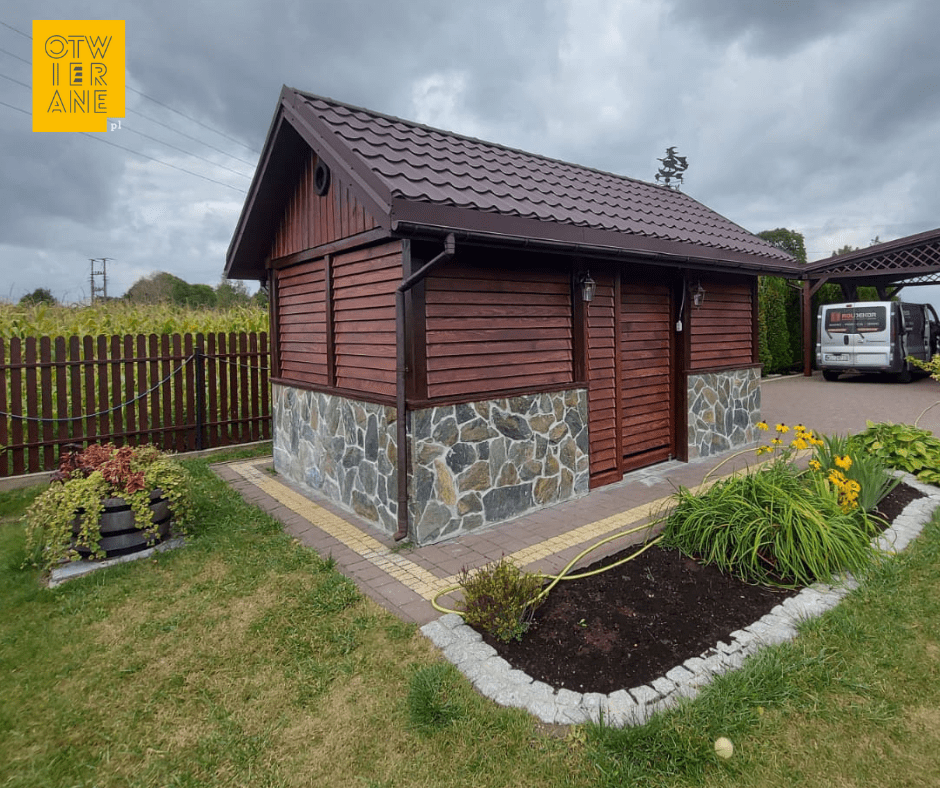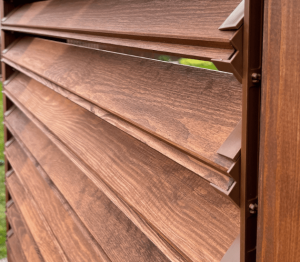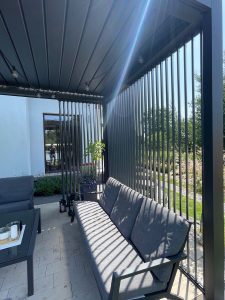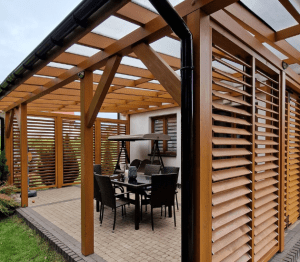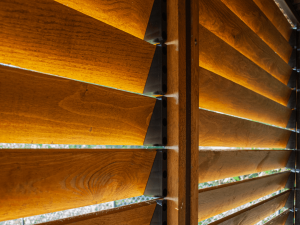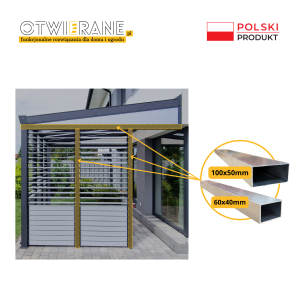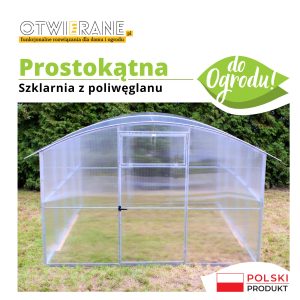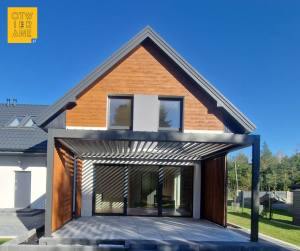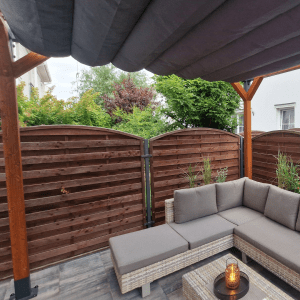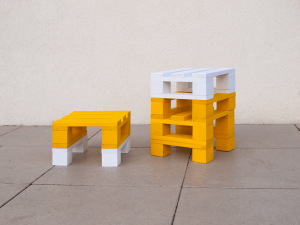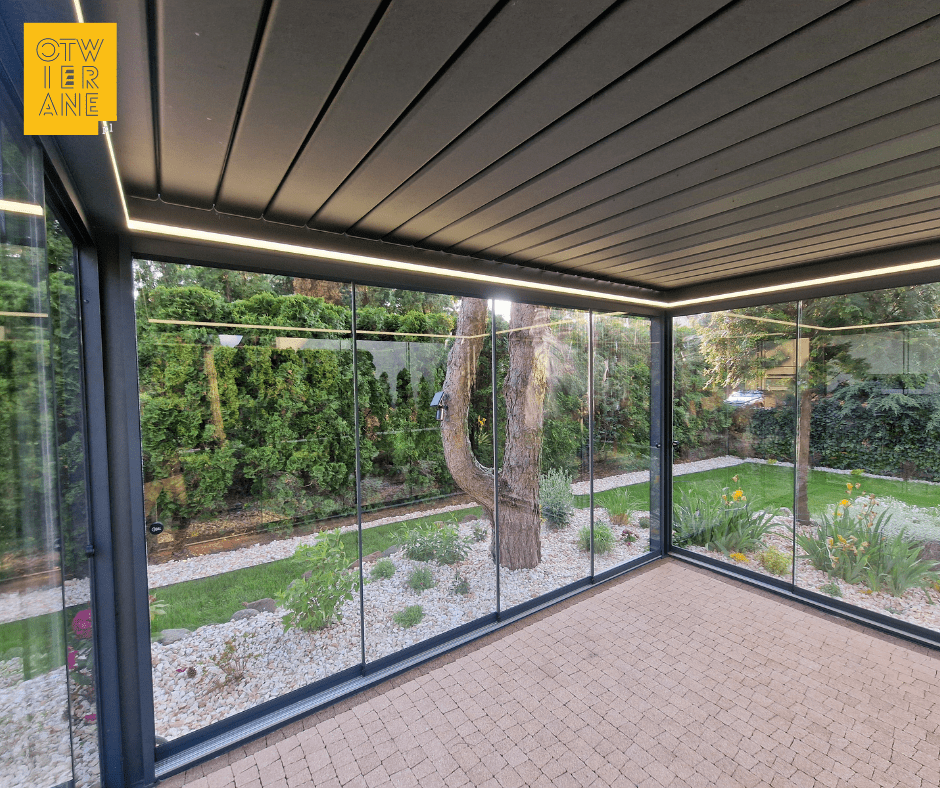
What is a pergola canopy?
A pergola roof is a way to create a functional space whatever the weather. Find out which roofs you can use and what makes them different.
The pergola canopy is an element that has a direct impact on the comfort of the terrace or garden. It protects against rain, sun and, in some cases, snow. Depending on the type of material used for the roof, you can get either a seasonal or year-round space. In this article, we discuss the most important types of roofing, their functions, uses, advantages and disadvantages.
A pergola canopy is not the same as a terrace canopy.
While a pergola canopy is part of a complete structure consisting of posts and beams, a terrace canopy can simply be a roof attached to the building façade, balcony or existing posts - without the need to build a full pergola. While the pergola creates the frame and defines the space, the terrace canopy has primarily a practical function: it protects from rain and sun, regardless of the form on which it is based.

What is the role of the pergola canopy?
The canopy of a pergola affects not only the aesthetics of the space, but above all its usability. If properly selected, it allows the terrace to be used in various weather conditions. It protects against UV radiation, shields against precipitation, shades or illuminates the space, and improves the microclimate under the pergola. In many cases, it makes it possible to create a relaxation area that can be used not only in summer, but also in spring and autumn.
Choosing the right roofing depends on whether you want durability, light control, aesthetics or perhaps simplicity of construction and low cost. The following are the most important options.
Types of roofing for pergolas (fixed roofs)
Fixed canopies do not change their position. They protect from the sun and precipitation at all times, but do not offer the possibility to adjust light or ventilation. The key element is the type of covering used.
Asphalt shingles
Flexible material to dampen the sound of rain. Requires full boarding. Aesthetically pleasing and blends well with timber. Works well with simple, classic pergolas.
Trapezoidal or panelled sheet metal
Durable covering with high resistance to wind and snow. Can resonate during precipitation and heat up in the sun. Often used in modern constructions.
Cellular or solid polycarbonate
Lightweight and transparent material available in transparent and milky versions. Protects against rain and UV radiation. Requires proper slope and installation of gutters. When properly installed, drains well, but can be noisy during precipitation and can promote heating of the space. Excess snow must be removed in winter.
Toughened or laminated glass
A heavy and aesthetically pleasing roof covering that provides a view of the sky and good light. It does not provide shade and can therefore lead to overheating of the terrace in summer. Requires a solid supporting structure and careful installation.
Mobile canopies - adjustable systems
Mobile canopies allow the amount of light and ventilation to be controlled. They are more flexible and functional than fixed structures.
Aluminium laths
They form a roof with profiles that can be rotated. They allow the space to be completely enclosed or ventilated. The system drains water through internal gutters. The aluminium structure is resistant to corrosion, precipitation and strong sunlight. In heavy rain, the roof makes the sound of droplets hitting it, but less intensely than polycarbonate. Considered a year-round solution.
Polycarbonate in a sliding system
Polycarbonate panels mounted on rails can be moved to open part of the roof. This solution is lighter and cheaper than a slatted roof, but does not offer the possibility to adjust the angle of the light. The roof still requires pitch and gutters. In winter, the amount of snow on the surface needs to be controlled.
Sunscreen fabric
Stretchable on runners, it can be rolled up manually or electrically. Protects from the sun, but not suitable for use in the rain or winter. A lightweight, seasonal solution that requires maintenance.
Laths or polycarbonate - which to choose?
The slatted roof allows light and ventilation to be regulated. It is airtight when closed and drains effectively. It can be used all year round. It works well in both summer and winter, provided it is correctly installed and has a stable structure.
A polycarbonate canopy is a good seasonal alternative. It protects against precipitation and provides good light to the terrace, but it does not allow you to regulate the conditions under the roof. The construction requires proper pitch, gutters and inspection of the condition of the covering in winter.
Does the roofing of the pergola need to be notified?
In most cases, pergola canopies of up to 35 m² do not require planning permission, but it is worth consulting your local municipality or town hall in each case. Regulations may vary depending on the location and use of the plot.
Check out our pergolas with functional canopies
If you are planning to install a pergola on your terrace or in your garden, take a look at our offer:
Wooden pergola with polycarbonate roof - durable construction and a clear roof that works well from spring to autumn.
Aluminium pergola with lamella roof - a modern all-year-round solution with fully adjustable light and ventilation.
Contact us for a quote and to discuss the details:
tel. +48 530 336 595
email: zadaszenia@otwierane.pl
www.otwierane.pl

